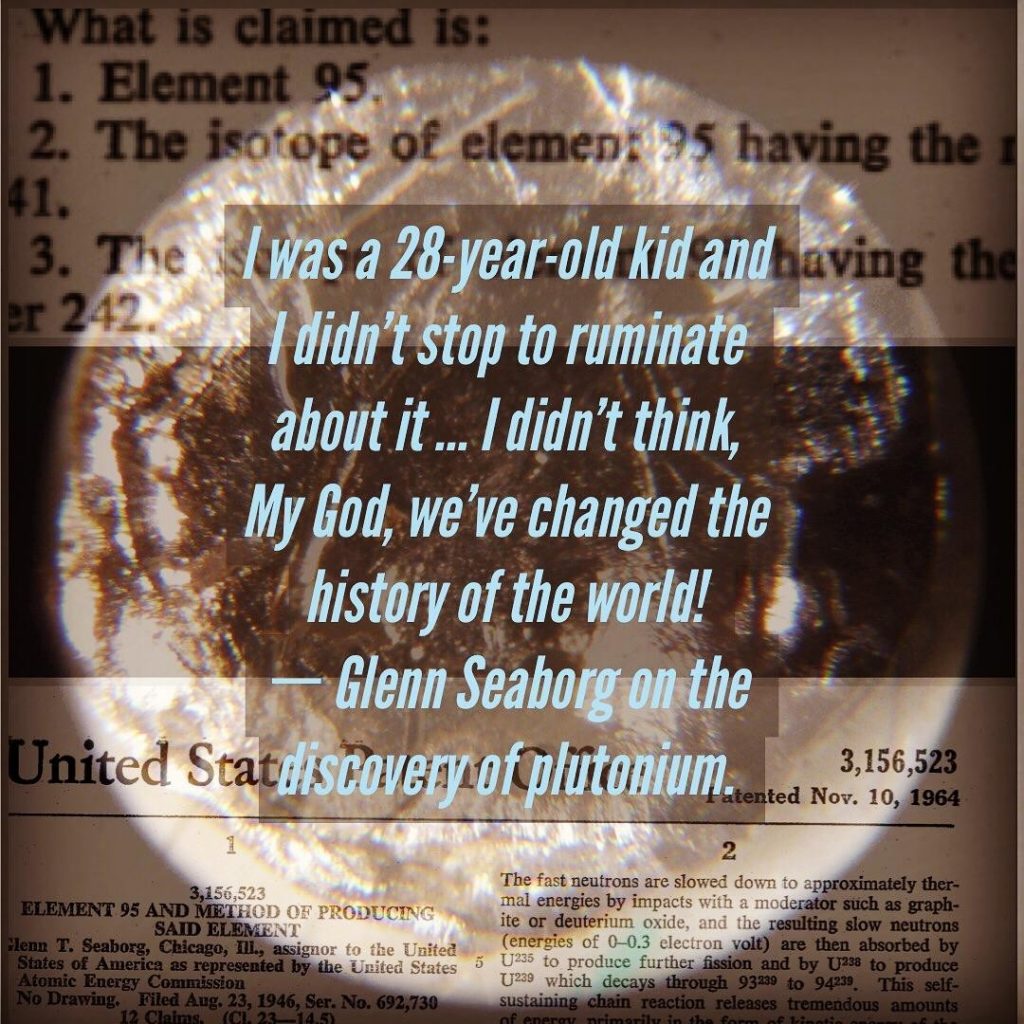Glenn T. Seaborg discovered plutonium in 1940, ushering in the atomic age. He went on to win the Nobel prize, isolating several trans uranium elements, two of which he patented. He rearranged the periodic table of the elements, became the head of the Atomic Energy Commission, and negotiated the high-altitude and sub-ocean nuclear test ban treaties.

His patent application claiming Americium (Element 95) was rejected by the US Patent Office on the grounds that the element was likely an inherent product produced during nuclear fission reactions described in an earlier patent to Fermi et al. On appeal from the Patent Office, the Court of Customs and Patent Appeals acknowledged “the ‘inherency doctrine,’ … infers a lack of novelty in a product … if a comparable process for making the product is found to exist in the art.”
“I was a 28-year-old kid and I didn’t stop to ruminate about it … I didn’t think, My God, we’ve changed the history of the world!”
Glenn T. Seaborg
But the Court found “that the claimed product, if it was produced in the Fermi process, was produced in such minuscule amounts and under such conditions that its presence was undetectable.” The court held inherency does not apply under these circumstances. Having overcome the rejection on appeal, Seaborg was awarded U.S. Pat. 3,156,523 which concisely claims Americium as follows: - 1. Element 95. -
